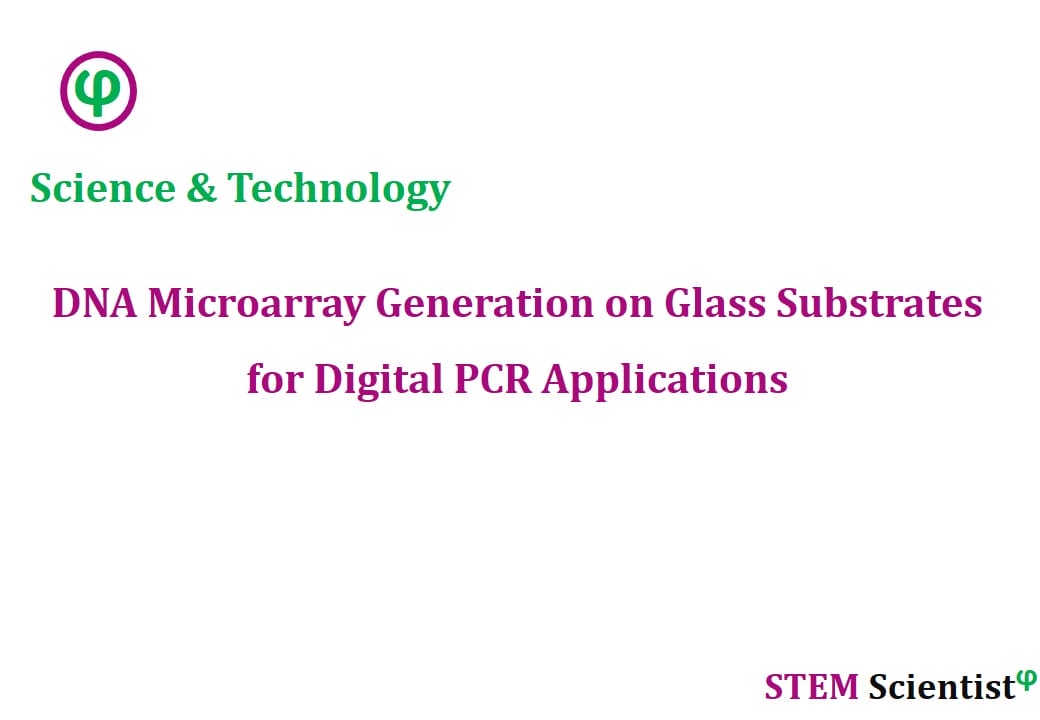
The following study was conducted by Scientists from University of Freiburg, Center for Biological Systems Analysis (ZBSA), Habsburgerstrasse. Freiburg, Germany; University of Freiburg, Department of Microsystems Engineering (IMTEK), Georges-Köhler-Allee, Freiburg, Germany; University of Freiburg, Faculty of Biology, Schänzlestrasse, Freiburg, Germany; BioCopy GmbH, Emmendingen, Germany; University of Freiburg, Center for Biological Signalling Studies (BIOSS), Schänzlestrasse, Freiburg, Germany; Brandenburg Medical School (MHB), Neuruppin, Germany; BioCopy Holding AG, Industriestrasse, Aadorf, Switzerland. Study is published in Scientific Reports Journal as detailed below.
Scientific Reports; Volume 10, Article Number: 5770; (2020)
Digital DNA Microarray Generation on Glass Substrates
Abstract
In this work we show how DNA microarrays can be produced batch wise on standard microscope slides in a fast, easy, reliable and cost-efficient way. Contrary to classical microarray generation, the microarrays are generated via digital solid phase PCR. We have developed a cavity-chip system made of a PDMS/aluminum composite which allows such a solid phase PCR in a scalable and easy to handle manner. For the proof of concept, a DNA pool composed of two different DNA species was used to show that digital PCR is possible in our chips. In addition, we demonstrate that DNA microarray generation can be realized with different laboratory equipment (slide cycler, manually in water baths and with an automated cartridge system). We generated multiple microarrays and analyzed over 13,000 different monoclonal DNA spots to show that there is no significant difference between the used equipment. To show the scalability of our system we also varied the size and number of the cavities located in the array region up to more than 30,000 cavities with a volume of less than 60 pL per cavity. With this method, we present a revolutionary tool for novel DNA microarrays. Together with new established label-free measurement systems, our technology has the potential to give DNA microarray applications a new boost.
Source:
Scientific Reports
URL: https://www.nature.com/articles/s41598-020-62404-1
Citation:
Wöhrle, J., S. D. Krämer, et al. (2020). “Digital DNA microarray generation on glass substrates.” Scientific Reports 10(1): 5770.


